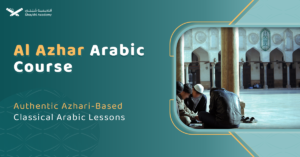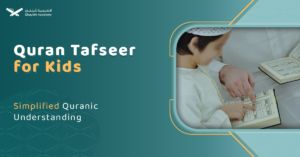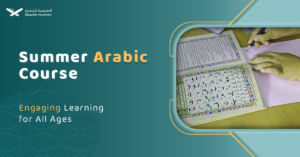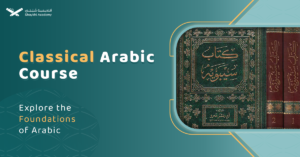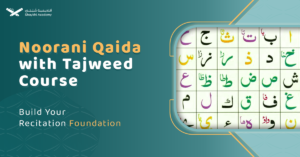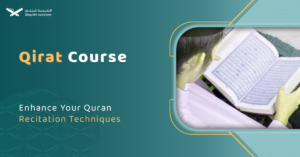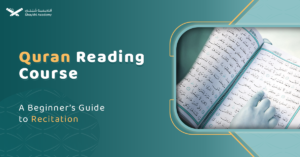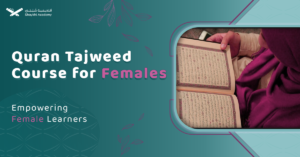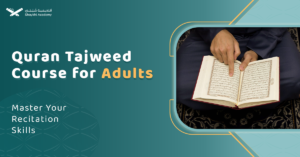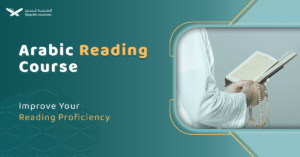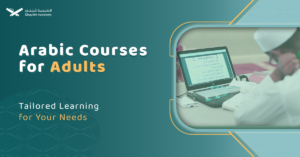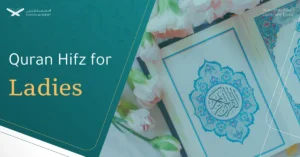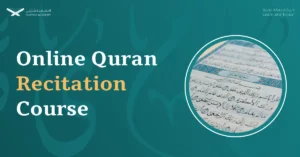Arabic plurals are categorized into three types: sound masculine, sound feminine, and broken plurals. Sound plurals add specific endings like (ون), (ين), or (ــات) to masculine or feminine nouns without altering their base form. In contrast, broken plurals change the word’s internal structure, such as “رجل” becoming “رجال” or “كتاب” transforming into “كتب.”
These forms vary by grammatical rules and context, making them essential for fluency in Arabic. Learn Arabic plurals easily with Shaykhi Academy’s expert-led online courses, offering flexible schedules and affordable prices.
Nouns in the Arabic language are divided into three categories: singular, dual, and plural. These categories are the basis upon which the appropriate verb and pronunciation are chosen. In this article, we will discuss the difference between them, focusing on the plural in Arabic with its forms and types. Are you ready?
Introduction To Plural, Singular And Dual In Arabic:
The difference between plural, singular and dual lies in the number of elements or entities that are referred to as follows:
1- Singular in Arabic
Singular in Arabic refers to one person, thing or concept.
Example:
كتاب (book) – قطة (cat) – طفل (child)
2- Dual in Arabic
Dual in Arabic Refers to two people, things or concepts specifically. The dual is a distinction associated with the Arabic language and has no equivalent in other languages such as English, for example.
Example:
كتابان (two books) قِطتان (two cats).
Formation of the dual in Arabic:
For most nouns, add “ان” or “ين” according to the grammatical case.
If the noun is raised, we add “ان” such as: كلبان (two dogs).
If it is an object or a noun in the accusative case, we add “ين” such as: ) طفلينTwo kids (.
3- Plural in Arabic
Plural in Arabic refers to more than two people, things or concepts.
Example: كتب (books)
قطط (cats)
Now let’s discuss this type in detail…
What Is Plural in Arabic?
The plural in Arabic refers to any noun that indicates more than two things. The plural of a singular noun is formed by either adding a letter to its end or changing it entirely, depending on the type of plural: whether it is a sound masculine plural, a sound feminine plural, or an irregular plural.
You may be wondering now what is the sound masculine and feminine plural and the broken plural (irregular plural) and what is the difference between them? In short, these three are the types of plural in the Arabic language and in the following lines I will tell you about each of them separately…
Types of Arabic plurals:
Arabic plurals are categorized into three primary patterns: sound masculine plural, sound feminine plural, and broken plural. The sound masculine plural denotes more than two masculine nouns by appending fixed syllables: (ون) in the nominative and (ين) in accusative or genitive cases, without altering the word’s core structure. For example, “مهندس” becomes “مهندسون” or “مهندسين” based on grammatical context.
Conditions for forming this plural include being a rational, masculine noun or adjective, free from feminine endings or composition, such as “زيدون” (from زيد). The sound feminine plural, meanwhile, applies to feminine nouns or adjectives and adds (ــات) to the singular form, like “نبات” transforming into “نباتات.” Key requirements include ending with a tied taa (ة) and avoiding use with broken plurals.
The broken plural, unlike the sound plurals, alters the word’s internal structure through changes like addition, deletion, or vowel adjustments. Examples include “رجل” (رجال) and “كتاب” (كتب). This type is further divided into the plural of paucity (3–10 items) and abundance (more than 10).
Broken plurals are versatile, accommodating both rational and irrational nouns, and often involve nuanced transformations depending on the word’s length and form, as seen in examples like “مدرسة” (مدارس) and “مكتبة” (مكاتب).
let’s discuss these three Arabic plural patterns in details:
A. Sound masculine plural in Arabic
Sound masculine plural is a noun that indicates more than two masculine nouns and is described as sound because the word does not change in its basic structure, but rather a fixed syllable is added to it to transform it from singular to plural.
This fixed syllable is (ون) in the nominative case, (ين) in the accusative and genitive cases.
For Example:
The noun مهندس Engineer (engineers مهندسون) – (engineersمهندسين ), We place the fixed syllable according to the position of the word in the sentence and its parsing, whether it is nominative, accusative, or genitive.
There are a number of conditions that must be met in a word in order for it to be considered a sound masculine plural, which are:
1- the Singular and the plural must be the same
It should be no change in the basic form of the word when it is pluralized
2- The noun should be a rational and masculine proper noun
such as (زيد, and its plural is زيدون), and (علي, and its plural is عليون).
3- It should be an adjective for a rational and masculine noun
such as loyal (مخلص, and its plural is مخلصون), and benefactor (محسن, and its plural is محسنون), so it is not correct to say: expensive “باهظ” and pluralize it as “باهظون”, as this adjective is given to inanimate things that are also irrational.
4- The singular noun should be masculine and free of the feminine taa(ة)
That means that it is not correct, for example, to pluralize the name Muawiyah معاوية; although it is a masculine noun and indicates a rational name because it ends with the feminine taa (ة).
5- It should be free of composition
It is not correct, for example, to pluralize the name Abdul Rahman عبدالرحمنbecause it is a compound noun “i.e. composed of two words”
B. Sound feminine plural in Arabic
The sound feminine plural is a plural that indicates more than two, whether from proper nouns, animals or inanimate objects. This type is characterized by adding (ــات ) to the singular to become a sound feminine plural as in (زينبات – زرافات – نباتات).
There are a number of conditions that must be met in the noun or adjective to be a sound feminine plural, which are:
1. The word must be a feminine noun
This is somewhat obvious, as of course the sound feminine plural is not used with masculine nouns.
2. The word must end with a tied taa (ة)
The word must end with the letter taa (ة), as the sound feminine plural is not used with feminine nouns that end with a letter other than the tied taa (ة).
3. The word must be free from broken plurals
We mean here that we use it with singular nouns, as the sound feminine plural is not used with feminine nouns that have already been pluralized using the broken plural.
For example, we cannot make the word أراضي “lands” a sound feminine plural, firstly because it is pluralized from the “ة” at the end, and secondly because it is basically a plural and its singular is “أرض.”
C. Arabic broken plurals
The Arabic broken plural (takseer plural) is what indicates three or more, and has a singular that shares its meaning and origins, but with a change in its form when pluralized.
Causes in changes in Arabic broken plurals
The change may be by adding some letters; such as: lion أسد, and the plural is آساد, and it may be by subtracting some letters; such as: accusation تُهمة, and the plural is تُهم. Also, the change may be by diacritics of some letters, such as: lion أسد, and the plural is أُسْد.
Also, the change may be by adding and changing the diacritics together, such as: man رجل, and the plural is رجال. It may also be by changing the diacritics with the subtraction of some letters, such as: book كتاب, and the plural is كُتب. The sound masculine plural can be specific to both rational and irrational, unlike the sound masculine plural, which is specific only to rational.
Types of Arabic broken plurals
The broken plural in the Arabic language is divided into two parts: the plural of abundance and the plural of paucity. What are they? The plural of abundance is used for all nouns that indicate a number greater than ten, while the plural of paucity is used for nouns whose number is not less than 3 and not more than ten.
As for the rule of the broken plural, we can say that it is a topic that takes a long time to explain, and you can read it here. but in short, the broken plural is sometimes pluralized by changing the vowel of the letters or by adding a letter if the noun is triliteral, such as:
رجل man .. men رجال
قلب heart – – hearts قلوب
As for the case of quadriliteral and quintiliteral words:
A change occurs in the structure of the word, either by deleting a letter, adding a letter, or changing the vowels.
Example:
مدرسة school .. schools مدارس
مكتبة library — libraries مكاتب
What should I do to learn plurals in Arabic?
Plural is one of the most important rules of the Arabic language that must be learned to master speaking Arabic on the one hand and learn to read the Quran correctly on the other hand. You can learn this through the online Arabic learning course from Shaikhi Academy
Apply now and get a free trial session!
Why choose Shaikhi Academy?
Shaykhi Academy offers you a number of advantages, which are:
1- Qualified teachers:
Our teachers specialize in teaching the Arabic language and are also Arabs by origin, which means that you get the information from its people.
2- Flexible times
That means you will not be disrupted from your daily activities and work.
3- Reasonable prices:
Shaykhi Academy presents the course at prices suitable for all levels, so the financial factor will not be a problem for you.
4- Online classes:
So you can get it while you are in your home.
Explore Our Arabic Courses:
- Noorani Qaida: Build a strong foundation in Quranic Arabic.
- Comprehensive Arabic Courses: Master the Arabic language, from beginner to advanced levels.
- Fusha Arabic Classes: Delve into Modern Standard Arabic, the key to understanding literature, media, and formal communication across the Arab world.
- Quranic Arabic Course: Enhance your connection with the Quran by learning the language in which it was revealed.
Start Your Arabic Journey Today! Whether you’re just starting or looking to deepen your knowledge, Shaykhi Academy is here to support your journey. Book your free trial now and begin your path to Arabic mastery!

Conclusion:
Arabic plurals fall into three main types: sound masculine plural, sound feminine plural, and broken plural. The sound masculine plural is formed by adding fixed syllables such as (ون) or (ين) without altering the noun’s core structure. This form is exclusive to rational, masculine nouns or adjectives that meet specific criteria, such as being free of feminine endings or composition.
The sound feminine plural is created by appending (ــات) to feminine nouns or adjectives, provided they end in a tied taa (ة) and are not already pluralized using the broken plural method. Both types maintain the original structure of the noun while adhering to grammatical case rules.
In contrast, the broken plural transforms the internal structure of the noun, often involving changes like adding, removing, or altering letters and vowels. Examples include “رجل” becoming “رجال” and “كتاب” turning into “كتب.” This type is divided into the plural of paucity (3–10 items) and abundance (more than 10), making it more versatile and complex.
Learning these plural forms is crucial for mastering Arabic communication and Quranic reading, a skillset supported by Shaykhi Academy’s online courses, which offer expert instruction, flexible scheduling, and affordable pricing.
Plural in the Arabic language is one of the most important rules that must be learned to master the Arabic language. Plural in Arabic is divided into three types: sound feminine plural, sound masculine plural, and broken plural, each of which has its own patterns and weights that you can learn through the Arabic learning course from Shaikhi Academy. Register now and get it!










